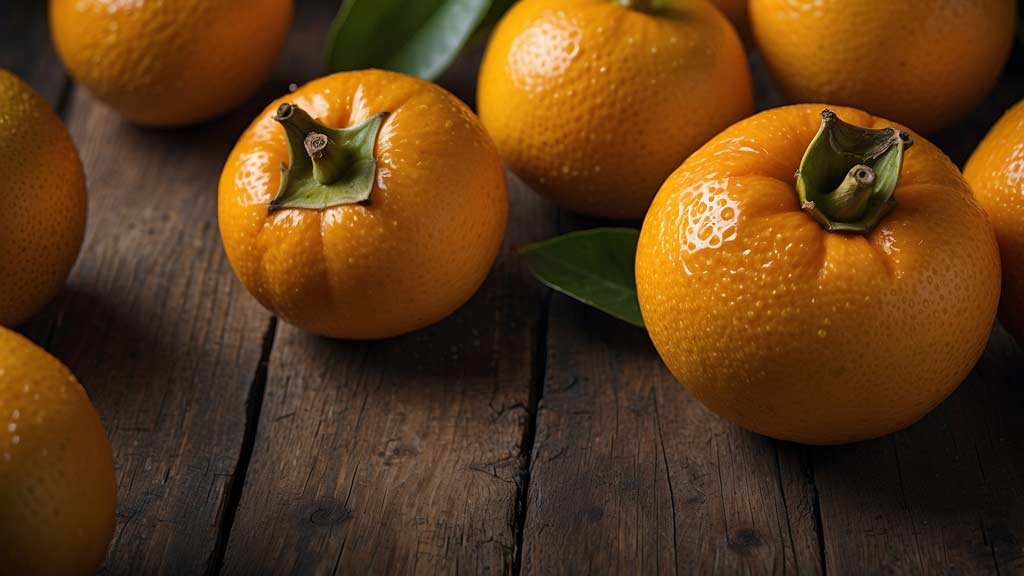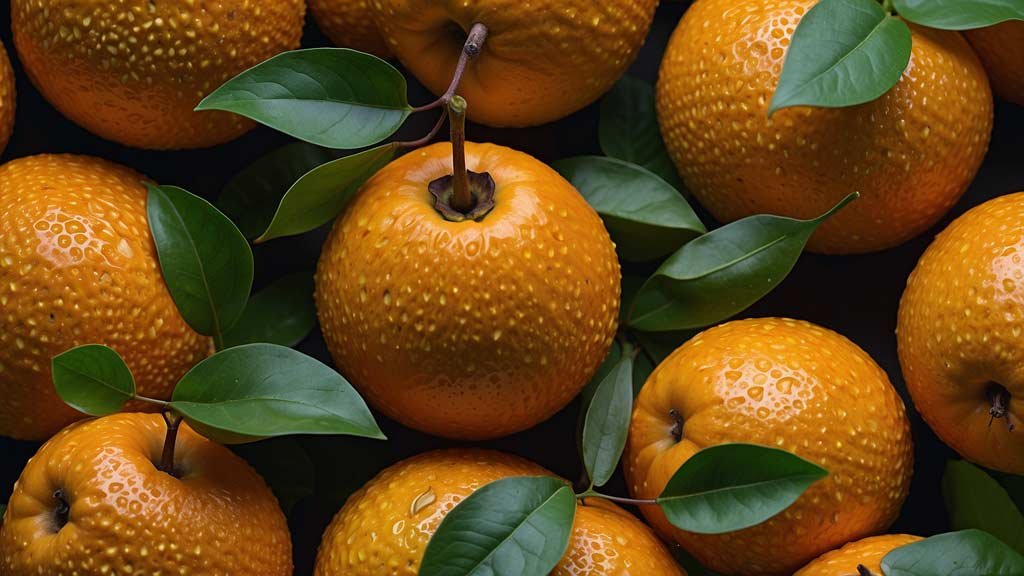The Timeless Wisdom of Bael Fruit
Imagine wandering through the dense forests of India, the scent of earthy soil mixing with subtle hints of citrusy sweetness in the air. Hidden among the greenery, you spot a tree with rough, grey bark and round, hard fruits hanging like ancient treasures. This, my friend, is the bael tree. Its fruit, often referred to as wood apple, has been a cornerstone in Ayurvedic medicine for centuries, primarily for one reason: digestion.
Bael fruit isn’t just a snack you happen to find on a tree. It’s a powerhouse packed with compounds that support your gut in ways modern science is starting to respect. For those of us who struggle with bloating, irregular bowel movements, or general digestive discomfort, bael might just be nature’s quiet helper.
Table of Contents
What Makes Bael Fruit Special?
The uniqueness of bael fruit lies not just in its flavor—a blend of sweet, tangy, and slightly astringent notes—but in its chemical profile. Here’s what’s inside:
- Fiber: Helps move things along and keeps your digestive tract in check.
- Tannins: Provide mild astringent properties, reducing inflammation and helping with diarrhea.
- Alkaloids: Support digestion and may reduce intestinal spasms.
- Vitamins A, C, and B-complex: Aid in overall gut health and immunity.
- Minerals like calcium, potassium, and magnesium: Maintain electrolyte balance and promote smooth bowel function.
Have you ever bitten into one and noticed that slightly sticky, sweet pulp? That texture isn’t just delightful—it’s rich in soluble fiber, which feeds your gut bacteria and helps maintain a balanced microbiome.
Bael Fruit in Traditional Ayurvedic Practice
In Ayurveda, bael fruit is revered as a digestive tonic. Its classification as a “tridoshic” fruit means it can balance all three doshas—Vata, Pitta, and Kapha. Practitioners often recommend it for the following:
- Constipation relief: The natural laxative effect gently nudges the intestines without causing cramping.
- Diarrhea management: The astringent tannins help firm up loose stools.
- Acidity and heartburn: Its cooling effect soothes the stomach lining.
- Digestive enzyme support: Enhances the breakdown and absorption of nutrients.
In traditional recipes, the pulp is either eaten fresh, dried, or made into syrups and jams. Some even use it as a paste mixed with honey to help regulate digestion over time. It’s fascinating how these ancient practices were actually fine-tuned observations of what worked, long before modern labs confirmed the benefits.
Scientific Insights into Bael’s Digestive Benefits
Modern research has started to catch up with what Ayurveda has been saying for centuries. Studies indicate that bael fruit extract has multiple gastrointestinal benefits:
- Antimicrobial properties: Helps reduce harmful gut bacteria, maintaining a healthier balance.
- Anti-inflammatory effects: Reduces inflammation in the intestines, aiding conditions like irritable bowel syndrome (IBS).
- Laxative action: Mild stimulation of intestinal movements without causing discomfort.
A 2010 study published in the Journal of Ethnopharmacology demonstrated that bael fruit significantly improved bowel regularity in participants suffering from constipation. Another research review highlighted its potential in protecting the gut lining from infections and ulcers.
How to Incorporate Bael Fruit Into Your Diet
Now, you might wonder, “Sure, it’s great in theory, but how do I actually use it?” Here’s the practical side:
- Fresh pulp: Scoop out the pulp and eat it as-is. Its texture is unique, and a little goes a long way.
- Juice: Blend the pulp with a bit of water and honey for a soothing digestive drink.
- Powder: Dried bael fruit powder can be added to smoothies or mixed with warm water.
- Syrups and jams: Traditionally, bael is cooked down with jaggery or sugar, concentrating its beneficial compounds.
A little tip: ripe bael is sweeter and easier on the stomach, whereas unripe fruit is more astringent and potent in its medicinal properties. You can play around with the balance depending on what your gut needs.

Sensory Experience and Anecdotes
Have you ever held a bael fruit? Its hard shell feels like stone, rough to the touch. Crack it open, and you’re greeted with a sticky, amber-colored pulp. The aroma is fruity yet slightly musky—something that lingers and tempts your taste buds. Eating it can be a full sensory experience: the pulp sticks to your fingers, the sweetness melts on your tongue, and the faint bitterness reminds you it’s medicine, not candy.
I remember trying it for the first time during a visit to a local market in Kerala. The vendor handed me a half-cut fruit, and I was surprised by the warm, soothing sensation it left in my stomach after just one small serving. It wasn’t dramatic—just a quiet, comforting balance that made me think, maybe our ancestors knew something.
Potential Considerations
Like all potent herbs, bael isn’t for everyone. Some considerations include:
- Pregnancy and breastfeeding: Limited research, so best to consult a healthcare provider.
- Allergic reactions: Rare, but possible if you’re sensitive to other fruits in the same family.
- Medication interactions: Its mild laxative effect might interfere with certain prescriptions.
Always start with small amounts to gauge your body’s response.
The Gut Microbiome Connection
Here’s where it gets really interesting: the soluble fiber in bael fruit feeds the good bacteria in your gut. Think of it as prebiotic fuel. Healthy gut bacteria produce short-chain fatty acids that soothe the intestinal lining, support immune function, and even influence mood. It’s not a stretch to say that a healthy gut equals a happier, more balanced you.
Bael Fruit Beyond Digestion
While its primary reputation rests on gut health, bael fruit’s influence extends further:
- Immune support: Vitamins and antioxidants help fight oxidative stress.
- Liver protection: Some studies suggest bael can aid liver function, assisting in toxin metabolism.
- Blood sugar regulation: Early research indicates it may help maintain stable glucose levels.
So, even if digestion isn’t your main concern, adding bael fruit to your regimen might provide subtle, broad-spectrum health benefits.
Recipes to Try
If you want to experiment with bael fruit, here are a couple of simple, sensory-rich options:
Bael Pulp Drink
- 1 ripe bael fruit pulp
- 1 cup water
- 1 tsp honey or jaggery
Blend until smooth, chill slightly, and sip slowly. It’s refreshing, tangy, and soothing for the digestive tract.
Bael and Yogurt Smoothie
- 2 tbsp bael fruit powder
- 1 cup plain yogurt
- ½ banana
- A pinch of cinnamon
Mix all ingredients for a gut-friendly breakfast or snack. The yogurt’s probiotics pair beautifully with bael’s prebiotic fiber.
Final Thoughts on Bael Fruit
So, is bael fruit a magical fix? No, it’s not a panacea. But it is a remarkable herbal ally for your digestive system, grounded in centuries of Ayurvedic practice and increasingly validated by modern science. It’s a fruit that makes you slow down, appreciate the textures, flavors, and effects, and most importantly, pay attention to your gut’s subtle cues.
In a world full of quick fixes and instant solutions, bael fruit reminds us that nature often knows best—sometimes, all you need is a little patience, a little time, and a fruit that has stood the test of time.
It’s not just digestion; it’s a small ritual of care, a moment to tune into your body, and perhaps, reconnect with ancient wisdom that whispers, quietly but insistently: feed your gut, nurture your balance, and the rest will follow.
Article Sources
At AncientHerbsWisdom, our content relies on reputable sources, including peer-reviewed studies, to substantiate the information presented in our articles. Our primary objective is to ensure our content is thoroughly fact-checked, maintaining a commitment to accuracy, reliability, and trustworthiness.
- Kaur, S., & Arora, S. (2010). Therapeutic potential of Aegle marmelos (L.) Corr.: A review. Journal of Ethnopharmacology, 132(2), 337-352. https://www.sciencedirect.com/science/article/pii/S0378874110000433
- Gopalan, C., Rama Sastri, B. V., & Balasubramanian, S. C. (2007). Nutritive value of Indian foods (National Institute of Nutrition). https://www.nin.res.in/nutritivevaluefoods.html
- Kumar, S., & Prakash, O. (2011). Pharmacological and therapeutic potential of Aegle marmelos. Pharmacognosy Reviews, 5(9), 55-62. https://www.phcogrev.com/article.asp?issn=0973-7847;year=2011;volume=5;issue=9;spage=55;epage=62;aulast=Kumar
- Joshi, R. K., & Sharma, M. (2010). Aegle marmelos: A potential herbal medicine. Indian Journal of Natural Products and Resources, 1(3), 267-276. http://nopr.niscair.res.in/handle/123456789/10435




